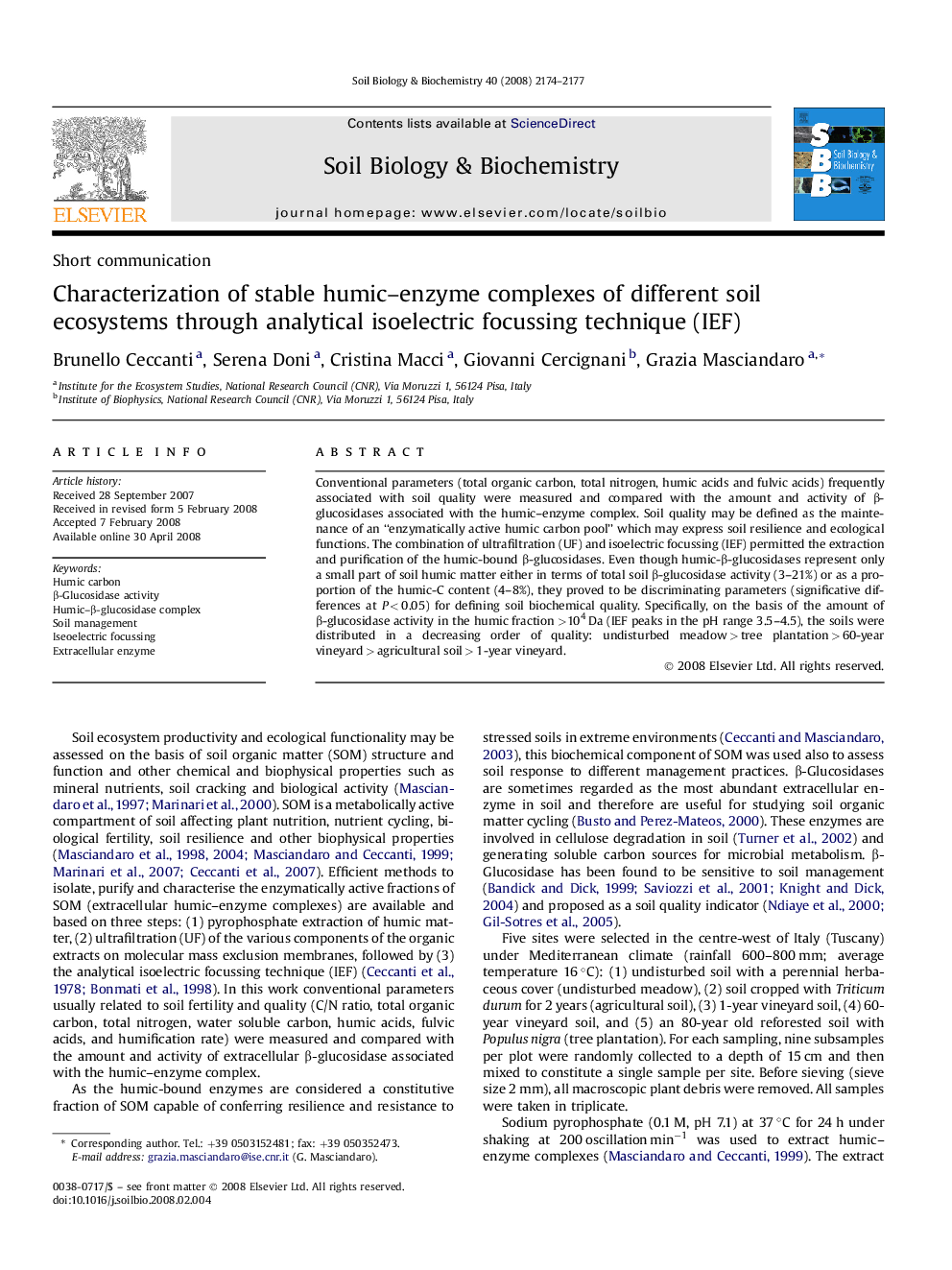| Article ID | Journal | Published Year | Pages | File Type |
|---|---|---|---|---|
| 2026875 | Soil Biology and Biochemistry | 2008 | 4 Pages |
Abstract
Conventional parameters (total organic carbon, total nitrogen, humic acids and fulvic acids) frequently associated with soil quality were measured and compared with the amount and activity of β-glucosidases associated with the humic-enzyme complex. Soil quality may be defined as the maintenance of an “enzymatically active humic carbon pool” which may express soil resilience and ecological functions. The combination of ultrafiltration (UF) and isoelectric focussing (IEF) permitted the extraction and purification of the humic-bound β-glucosidases. Even though humic-β-glucosidases represent only a small part of soil humic matter either in terms of total soil β-glucosidase activity (3-21%) or as a proportion of the humic-C content (4-8%), they proved to be discriminating parameters (significative differences at P < 0.05) for defining soil biochemical quality. Specifically, on the basis of the amount of β-glucosidase activity in the humic fraction >104 Da (IEF peaks in the pH range 3.5-4.5), the soils were distributed in a decreasing order of quality: undisturbed meadow > tree plantation > 60-year vineyard > agricultural soil > 1-year vineyard.
Related Topics
Life Sciences
Agricultural and Biological Sciences
Soil Science
Authors
Brunello Ceccanti, Serena Doni, Cristina Macci, Giovanni Cercignani, Grazia Masciandaro,
